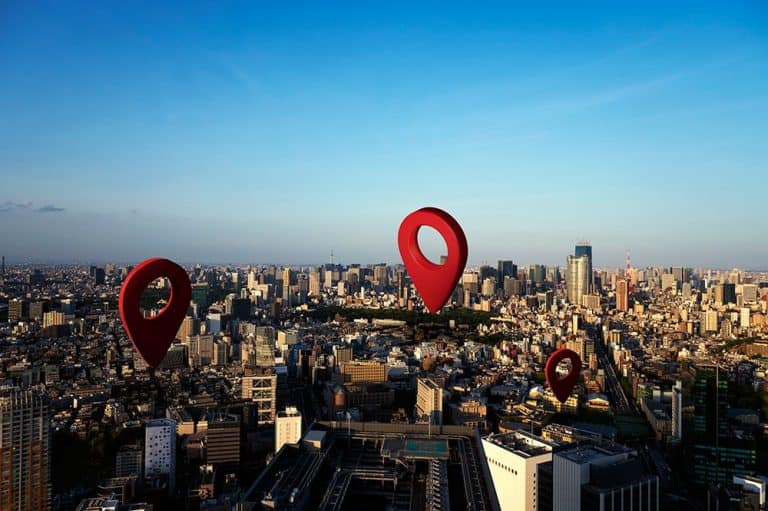
Professional Machine Translation Post-Editing Services
In the fast-paced world of global communication, ensuring your content is accurately translated and culturally relevant is crucial. Professional Machine Translation Post-Editing (MTPE) services offer a unique blend of machine efficiency and human expertise, providing a seamless translation experience. Whether you are expanding into new markets or enhancing your content for a diverse audience, MTPE is the key to achieving precise and effective communication.

What are the Benefits of Using Machine Translation Post-Editing?

Improving Efficiency with MTPE
MTPE significantly enhances efficiency by reducing the time required for translations while maintaining high quality. By leveraging machine translation tools and human editors, businesses can achieve faster turnaround times without compromising on accuracy. This efficiency is particularly beneficial for large-scale projects or when quick content updates are necessary, allowing companies to stay competitive in fast-moving markets.
Cost-Effectiveness of MTPE Services
One of the significant advantages of MTPE is its cost-effectiveness. By combining the speed of machine translation with the precision of human post-editing, businesses can reduce translation costs while ensuring quality. This makes MTPE an attractive option for companies looking to optimize their translation budgets without sacrificing the quality of their content.
Achieving Better Localization and Nuance
MTPE enables better localization by adapting content to the specific cultural and linguistic context of the target audience. Professional translators and post-editors ensure that the translated content reflects local customs, idioms, and terminology, which is crucial for engaging international audiences. This attention to detail enhances the overall quality and relatability of the content, fostering better audience engagement and connection.
What is Machine Translation Post-Editing (MTPE) and Why is it Important?
Understanding the Basics of Machine Translation
Machine Translation (MT) leverages advanced algorithms to automatically translate text from a source language to a target language. While MT engines have made significant strides in recent years, they often fall short in capturing the cultural nuances and terminologies essential for accurate translations. This is where Machine Translation Post-Editing plays a critical role. By combining machine-generated translation with professional human editing, MTPE ensures the final output is not only linguistically correct but also contextually appropriate.
The Role of Post-Editing in Translation Projects
Post-editing is an integral part of translation projects that involve machine translation. Professional post-editors refine machine-translated content by correcting inaccuracies, refining language, and ensuring the text aligns with the intended message and tone. This process transforms raw machine translations into polished, publication-ready content. By utilizing MTPE, businesses can significantly improve the quality of their translation output, ensuring it meets industry standards and audience expectations.
How MTPE Enhances Translation Output Quality
MTPE enhances translation quality by bridging the gap between machine efficiency and human touch. The combination of translation memories, glossaries, and human translators ensures that the translation is consistent, accurate, and culturally relevant. MTPE allows for better localization by adapting content to the cultural and linguistic nuances of the target market. This results in a more engaging and relatable experience for the audience, ultimately enhancing brand reputation and communication effectiveness.
How Does the MTPE Process Work?

Exploring the Workflow of MTPE Services
The MTPE process begins with an initial machine translation, followed by a detailed review and editing by skilled human translators. This workflow is designed to optimize the strengths of both machine and human capabilities, ensuring a high-quality translation process. Each step is meticulously planned and executed to deliver precise and culturally sensitive translations, making MTPE an essential component of modern translation services.
Steps Involved in Machine Translation Post-Editing
The MTPE process involves several key steps: initial machine translation, light post-editing to address glaring issues, and full post-editing for thorough refinement. Light post-editing focuses on correcting major errors, while full post-editing involves a comprehensive review to ensure the translation is error-free and contextually appropriate. This structured approach allows for flexibility in meeting diverse project requirements and turnaround times.
The Difference Between Light and Full Post-Editing
Light post-editing is a quicker, less intensive process aimed at making machine-generated translations understandable and usable. It involves correcting major errors without a deep dive into stylistic or cultural nuances. On the other hand, full post-editing is a thorough process that ensures the translation is grammatically accurate, stylistically consistent, and culturally relevant. Choosing between light and full post-editing depends on the project’s goals, budget, and desired level of quality.
Collaboration Between Human Translators and AI
The success of MTPE services relies on a harmonious collaboration between human translators and AI technologies. By combining the analytical capabilities of AI with the interpretive skills of human editors, MTPE delivers translations that are not only fast and cost-effective but also culturally and linguistically accurate. This synergy is essential for achieving the high standards expected in the translation industry today.
The Role of Translators and Post-Editors
Translators and post-editors play a pivotal role in the MTPE process. They bring a wealth of linguistic knowledge, cultural understanding, and technical expertise to ensure translations are accurate and effective. These professionals work closely with machine translation tools and translation management systems to deliver high-quality content that meets client specifications and industry standards.
Skills Required for Effective MTPE
Effective MTPE requires a unique blend of skills, including linguistic proficiency, attention to detail, and a deep understanding of cultural nuances. Post-editors must be adept at using translation technologies and have the ability to critically assess machine-generated translations. Their expertise ensures that the final output is coherent, contextually appropriate, and aligned with the client’s brand voice and messaging.
Have questions about our MTPE services? Explore our FAQ or reach out to our expert team. We’re here to assist you in navigating the complexities of machine translation post-editing and ensuring your content achieves the desired impact.
For a portfolio list of past projects done
Eager to learn more about our past translation projects? Click here for more information
Steps in Our Translation Process

1. Get A Quote
WhizWordz receives enquiry from client and send quotation to client for approval.

2. Project Started
Upon confirmation, our Sales Representatives will work closely with Project Manager to start on the project. Upon proofreading, we will submit the translation copy to client.

3. Client Review
Client check through the translation copy for any comments and suggestions.

4. Project Delivery
Make changes and formatting where necessary. Final translation document send to client and project is concluded.
Related Information
Official Document Translation Services in Singapore
Importance to using Professional Translation Services for Blog
Tips to Finding a Professional Translation Company in Singapore
Frequently Asked Questions
Have a burning question about Translation Services in Singapore?
We are here to address your most pressing enquiries!
How much does translation services cost in Singapore?
The actual translation services costing will depend on language, complexity, turnaround time and other specifics of your project.
How long does it take to translate documents?
The time required for document translation depends on various factors such as document length, complexity, subject matter, and formatting requirements.
Can WhizWordz handle specialised translations in a specific industry?
Yes, WhizWordz being a reputable translation agency often have experts with domain-specific knowledge and experience. We can handle specialised translations in various industries such as legal, medical, technical, marketing, and more.
How do WhizWordz ensure the accuracy of translations?
WhizWordz employs skilled translators who are native speakers and have high proficiency in the respective language translation. We also follow quality assurance processes that include proofreading and editing to ensure accurate translations.
What file formats do WhizWordz accept for translation?
We accept a wide range of file formats including Word documents, PDFs, PowerPoint presentations, Excel spreadsheets, HTML files, and more.
Do WhizWordz offer certified translations for official documents?
Yes, we offer certified translations for official documents such as birth certificates, marriage certificates, academic transcripts, and legal contracts. These certified translations are accepted by government authorities and institutions.
Can I request revisions if I'm not satisfied with the initial translation?
Absolutely! WhizWordz International offers up to 2 rounds of revision services from the draft copy to ensure customer satisfaction. We will work closely with you to address any concerns or make necessary changes.
What languages does WhizWordz International translate?
WhizWordz International offers translation services for a wide range of languages including English, Chinese (simplified/traditional), Malay, Tamil, Japanese, Korean, French, German, Spanish, and many more.
Our Translation Language Pairs
Whether it’s a marketing brochure, a website translation or your personal certificates, we are able to provide a quick and complete language solution to help you interact with potential clients seamlessly. Check out these diverse language pairs designed to elevate your engagement strategies!


